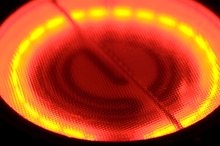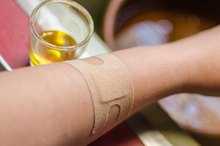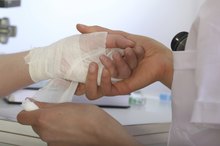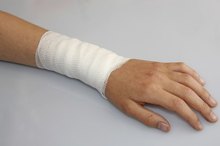How to Treat a Brush Burn
Brush burn, often referred to as rug burn, is a minor abrasion resulting from friction between your skin and another surface such as a rope, sidewalk or carpet. Brush burns are especially common among young children who are rolling and playing against rough surfaces. The burn reveals raw, sensitive skin that can be painful or sore to touch. Bleeding is minimal, and brush burn rarely calls for professional medical attention. Treating brush burn is similar to treating other types of minor burns; it requires basic hygienic care and protection 2.
Wash your hands. Even if the brush burn is not visibly bleeding, clean hands are essential in treating or dressing any sort of abrasion or wound on the skin 2.
How to Avoid Scars From Brush Burns
Learn More
Wash the brush burn. Use warm, not hot, soapy water and gently stroke away any dirt or debris. Use only your fingers. A wash cloth or sponge could further aggravate the wound.
Apply a thin layer of antiseptic cream or spray on the burned skin to prevent infection. Spread the antiseptic cream with a sterile cotton swab.
How to Treat a Burn on the Fingers
Learn More
Cover the brush burn with an adhesive bandage. Change the bandage after bathing and before sleeping to ensure that the wound stays clean and dry.
Tips
Resist the urge to cool the brush burn by blowing on the skin. Blowing with your mouth can spread germs.
Warnings
Seek medical attention If the burnt area appears swollen or begins discharging fluid.
Related Articles
References
- Medical University of South Carolina: Health Library
- Treating Skin Burns
- Davidson CC, Eadie PA. Burning more than calories: treadmill friction injuries in children. Irish Medical Journal. 2009;102(10):320-3. doi:10.1007/s11552-007-9046-2
- Jeremijenko L, Mott J, Wallis B, Kimble R. Paediatric treadmill friction injuries. Journal Of Paediatrics And Child Health, 2009;45(5), 310-312. doi:10.1111/j.1440-1754.2008.01329.x
- Klotz T, Kurmis R, Munn Z, Heath K, Greenwood J. Moisturisers in scar management following burn: A survey report. Burns. 2017;43(5), 965-972. doi:10.1016/j.burns.2017.01.021.
- Menon S, Ward D, Harvey J, Hei E, Holland A. Friction burns in children. Journal Of Burn Care & Research. 2012;33(6), 736-740. doi:10.1097/bcr.0b013e3182504469
- Ortiz-Prado E, Armijos L, Iturralde, A. A population-based study of the epidemiology of acute adult burns in Ecuador from 2005 to 2014. Burns. 2015;41(3), 582-589. doi:10.1016/j.burns.2014.08.012.
Tips
- Resist the urge to cool the brush burn by blowing on the skin. Blowing with your mouth can spread germs.
Warnings
- Seek medical attention If the burnt area appears swollen or begins discharging fluid.
Writer Bio
Christina Bednarz Schnell began writing full-time in 2010. Her areas of expertise include child development and behavior, medical conditions and pet health. She holds a Bachelor of Arts in international relations.









